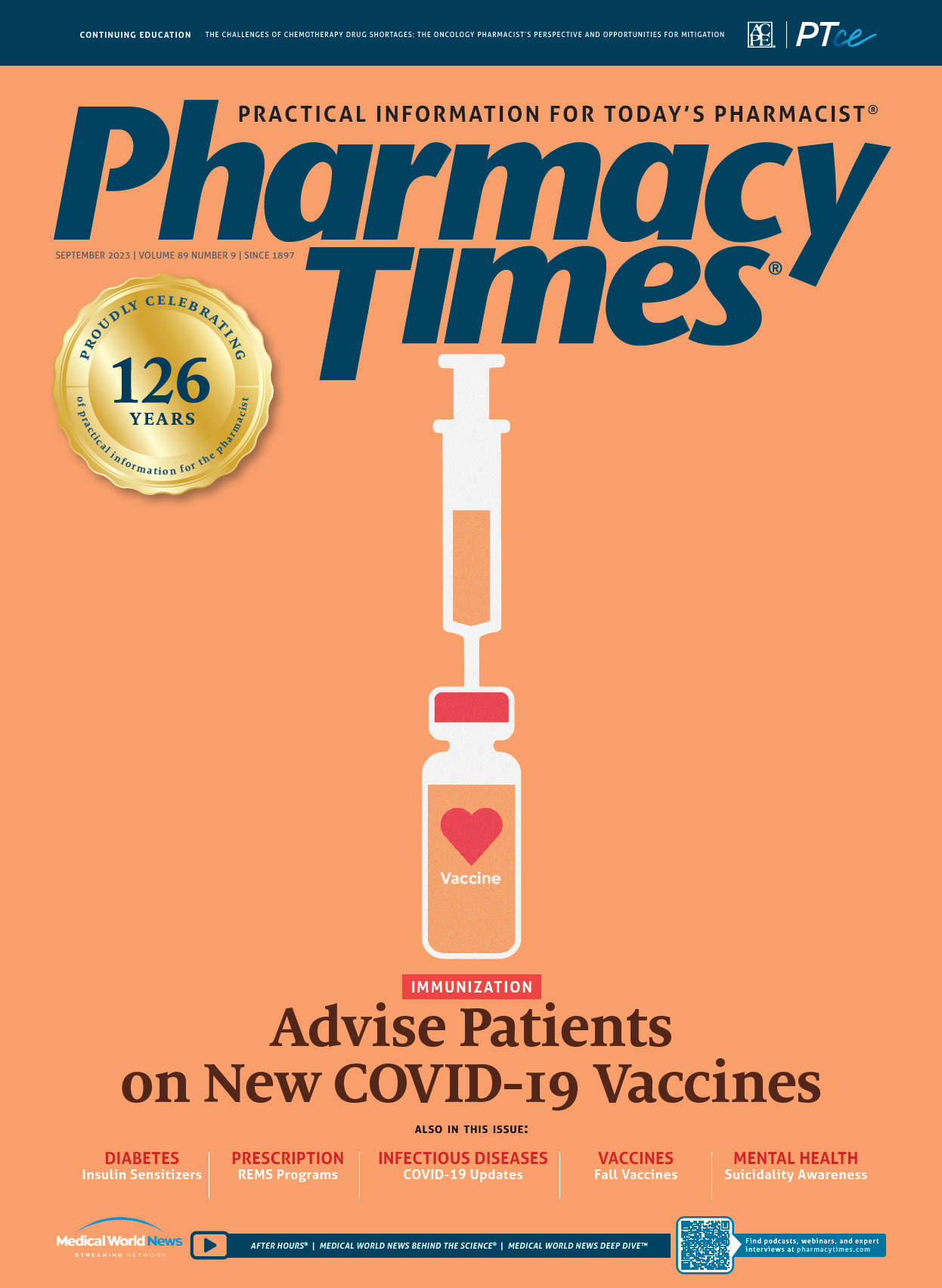Publication
Article
Interactive Case Studies: September 2023
Author(s):
Cases highlight an acute subdural hematoma and chronic obstructive pulmonary disease.
CASE 1
MW is a 56-year-old woman who presented to the emergency department a few days ago for an acute subdural hematoma requiring a craniotomy, after falling and hitting her head while consuming an alcoholic beverage. Her medical history includes an ST-segment elevation myocardial infarction (STEMI) in 2017, a resulting percutaneous coronary intervention with stent, and a provoked pulmonary embolism (PE) from estrogen-containing hormonal products 4 months ago. Her medications prior to admission included aspirin 81 mg daily, atorvastatin (Lipitor; Viatris) 80 mg daily, lisinopril (Qbrelis; Azurity Pharmaceuticals) 20 mg daily, metoprolol tartrate (Lopressor; Novartis) 25 mg twice daily, and apixaban (Eliquis; Bristol Myers Squibb, Pfizer) 5 mg twice daily. She is now 2 days post surgery. Beginning to plan for her discharge, the medical team wants to discontinue either the aspirin or the apixaban going forward to reduce her risk of bleeding.
Illustration by Kirstie Belle Medina

Which medication would you suggest discontinuing?
The appropriate medication to discontinue at this time is apixaban. Apixaban 5 mg twice daily is the appropriate dosage for anticoagulation following a pulmonary embolism, although the appropriate duration of therapy after a provoked pulmonary embolism is 3 months.1 Given that the patient is 4 months out from her PE, it is now appropriate to discontinue the apixaban. Aspirin is more appropriate to continue because the patient has a stent from her STEMI in 2017 and the antiplatelet effects of aspirin help to prevent stent thrombosis.2
CASE 2
AP is a 64-year-old man with newly diagnosed chronic obstructive pulmonary disease (COPD). He is presenting to a primary care clinic, and his care team is requesting drug therapy recommendations for his initial treatment. You review his medical record and see that his Modified Medical Research Council (mMRC) Dyspnea Scale score is 3 and his COPD Assessment Test (CAT) score is 10. Despite these bothersome symptoms, he denies any hospitalizations or exacerbations of COPD. Pulmonary function tests reveal a predicted forced expiratory volume in the first second of expiration of 75%.
What would be the optimal initial treatment for AP?
Because AP has an mMRC score greater than or equal to 2 and a CAT score greater than or equal to 10, his initial therapy should include both a long-acting β agonist and a long-acting muscarinic antagonist. Contemporary guidelines suggest that using a single inhaler may be more convenient and effective than multiple inhalers.3 Suggested inhalers include glycopyrrolate/formoterol metered-dose inhaler (Bevespi Aerosphere; AstraZeneca), tiotropium/olodaterol soft mist inhaler (Stiolto Respimat; Boehringer Ingelheim), and umeclidinium/ vilanterol dry powder inhaler (Anoro Ellipta; GSK). AP’s cognitive capacity, dexterity, and inspiratory capacity should be assessed to determine which inhaler type is best for him. For example, patients with poor inspiratory capacity or who are oxygen dependent should avoid dry powder inhalers.3 If AP has poor hand-to-mouth coordination, a metered-dose inhaler may not be the best option unless is it coprescribed with a valved holding chamber (eg, spacer).3 Regardless of the inhaler type selected, AP should be counseled on its proper use. AP should also be prescribed a rescue inhaler to be used on demand for acute symptoms such as shortness of breath and cough.
About the Authors
Stefanie C. Nigro, PharmD, BCACP, CDCES, is an associate clinical professor in the Department of Pharmacy Practice at the University of Connecticut School of Pharmacy in Storrs.
Rebecca Vales and Amanda Duddy are PharmD candidates at the University of Connecticut School of Pharmacy in Storrs.
References
- Kearon C, Akl EA, Ornelas J, et al. Antithrombotic therapy for VTE disease: CHEST guideline and expert panel report. Chest. 2016;149(2):315-352. doi:10.1016/j.chest.2015.11.026
- Lawton JS, Tamis-Holland JE, Bangalore S, et al. 2021 ACC/AHA/SCAI guideline for coronary artery revascularization: a report of the American College of Cardiology/American Heart Association Joint Committee on Clinical Practice Guidelines. Circulation. 2022;145(3):e18-e114. doi:10.1161/cir.0000000000001038
- Agustí A, Celli BR, Criner GJ, et al. Global Initiative for Chronic Obstructive Lung Disease 2023 report: GOLD executive summary. Am J Respir Crit Care Med. 2023;207(7):819-837. doi:10.1164/rccm.202301-0106PP






